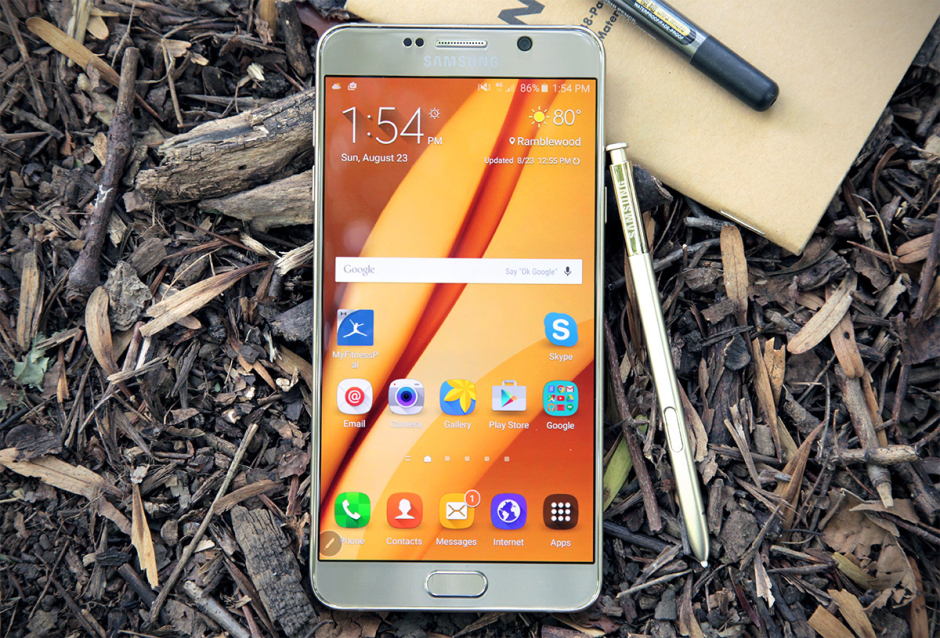How to root Samsung Galaxy Note 5

As Samsung Galaxy Note was unable to stand out last year over the explosion fiasco, the Samsung Galaxy Note 5 is the latest flagship phablet from Samsung that is currently in the market. If you have this smrtphone and want to access root privileges on it then we have got you covered. We already know what Android rooting is and and why you should even go for it.
Rooting this smartphone will help you to manipulate your Android experience just like a power user. It enables you to flash custom ROMs and modify system files. You will also be able to overclock your CPU and do much more, the possibilities are unlimited. We already have written a few rooting guides as well. So, without any further ado lets get back to rooting a Samsung Galaxy Note 5 smartphone running Android 6.0.1 Marshmallow official firmware.
There are many ways you can root your smartphone. We will be rooting Samsung Galaxy Note 5 smartphone using the widely trusted CF-Auto Root and Odin on a PC. Sometimes, you can also root your smartphones without using a PC through one click rooting applications. Although using one-click root application is a tad bit easier, it provides temporary roots and you will again have to root after reboot.
Disclaimer: Rooting your Samsung smartphone will void its manufacturer’s warranty and you may damage your device. In case of any damage in any form while following this tutorial, TJ is not to be held responsible in anyways. Proceed at your own risk.
Process:
1. Back-Up
The first step to any rooting solution is mostly the same. Although there is a slim chance that you would loose your data or damage the device, it is recommended that you do a back-up of the data stored on your smartphone.
You can either
- Copy all the data from you mobile to your SD card.
- Transfer all the data to your PC.
- Use Samsung Kies to backup the device.
2. Download USB drivers for your Samsung Galaxy Note 5
Download the USB drivers for your smartphone and install them on your computer in order to seamlessly connect it to your PC successfully.
You can use either of the following links.
- Download Samsung USB Drivers from here
- Download Samsung KIES (Includes Drivers)
3. Enable USB debugging mode on your Note 5
In order to enable the USB debugging mode, follow these steps.
- Go to Settings on your smartphone
- Scroll down and find ‘Developer Options’ and tap there
- Enable USB debugging and OEM Unlocking
By default the Developer Options aren’t visible in Settings menu. You, however, can make it visible by following these steps.
- Go to Settings on your smartphone
- Scroll down till you see “About Device” or “About Phone” and tap there
- Tap on Build Number for 5-7 times to make the Developer Options visible
- Now follow the standard steps to enable USB debugging and OEM Unlocking
4. Download the root package for your note 5
You will be required to download the root package for your smartphone which is different for every model of the Samsung Galaxy Note 5. This mostly depends on your region of purchase or what hardware specs are you going for. Do follow these steps to check what model you are on.
- Go to Settings on your smartphone
- Scroll down till you see “About Device” or “About Phone” and tap there
- Note down the model number
Now using the links given below, download the root package for your model.
- Download CF Auto-Root for N920K
- Download CF Auto-Root for N920G
- Download CF Auto-Root for N920P
- Download CF Auto-Root for N920I
- Download CF Auto-Root for N920L
- Download CF Auto-Root for N920R4
- Download CF Auto-Root for N920C
Next, you would need to download Odin, a software that you would be using to flash your smartphone.
- Download the Odin3
- Save the file on your PC and extract it.
Before going on to the next step, make sure that your device has sufficient battery reserve in it. You would also have to deactivate any anti-virus program in your computer so that it may not disturb the process.
5. Open your smartphone in Fastboot mode
Open your smartphone in Fastboot mode by following these steps.
- Disconnect your smartphone from any PC.
- Switch off your smartphone.
- Press and hold the Volume Down, Home simultaneously and then press the Power button till you see a warning sign.
- Press Volume Up to confirm.
Once your device boots into the download mode, connect it to your computer using the original USB data cable.
6. Process on your PC
After connecting the smartphone, go to the folder where you have downloaded the Odin.
- Find the Odin3.exe file and open it. If you have USB drivers of your device in your PC, you will be able to see ‘Added’ in the Odin dialogue box.
- Click on ‘AP’/’PDA‘ button and select the extracted file by navigating to the folder where you have extracted the CF Auto-Root package.
- Make sure the Auto Reboot and F. Reset Time options is checked.
- Click on the ‘Start’ button.
The flashing process will start automatically. After the process is finished, your device will reboot automatically into the rooted mode. If you would want to know if your device has correctly been rooted or not, download a root checker application from Google Play and check for root privileges. You can check for the SuperSU application in app drawer.
Want such a how-to rooting guide of any other phone? Just mention name of the smartphone in the comments section below and we will be more than happy to look into it.
Image — Engadget
I love to talk about global tech-happenings, startups, industry, education and economy. Get in touch: [email protected].
Related Posts
Tecno Pakistan Maintains Steady Local Manufacturing Output in 2025
ISLAMABAD: Tecno has successfully maintained its presence in local mobile manufacturing, displaying consistency despite industry fluctuations. According to the latest data, Tecno’s locally assembled…
Vivo Pakistan Faces Sharp Decline in Local Manufacturing in Early 2025
ISLAMABAD: Vivo, a prominent player in the local mobile manufacturing market, has experienced a significant drop in production in early 2025. According to the…














